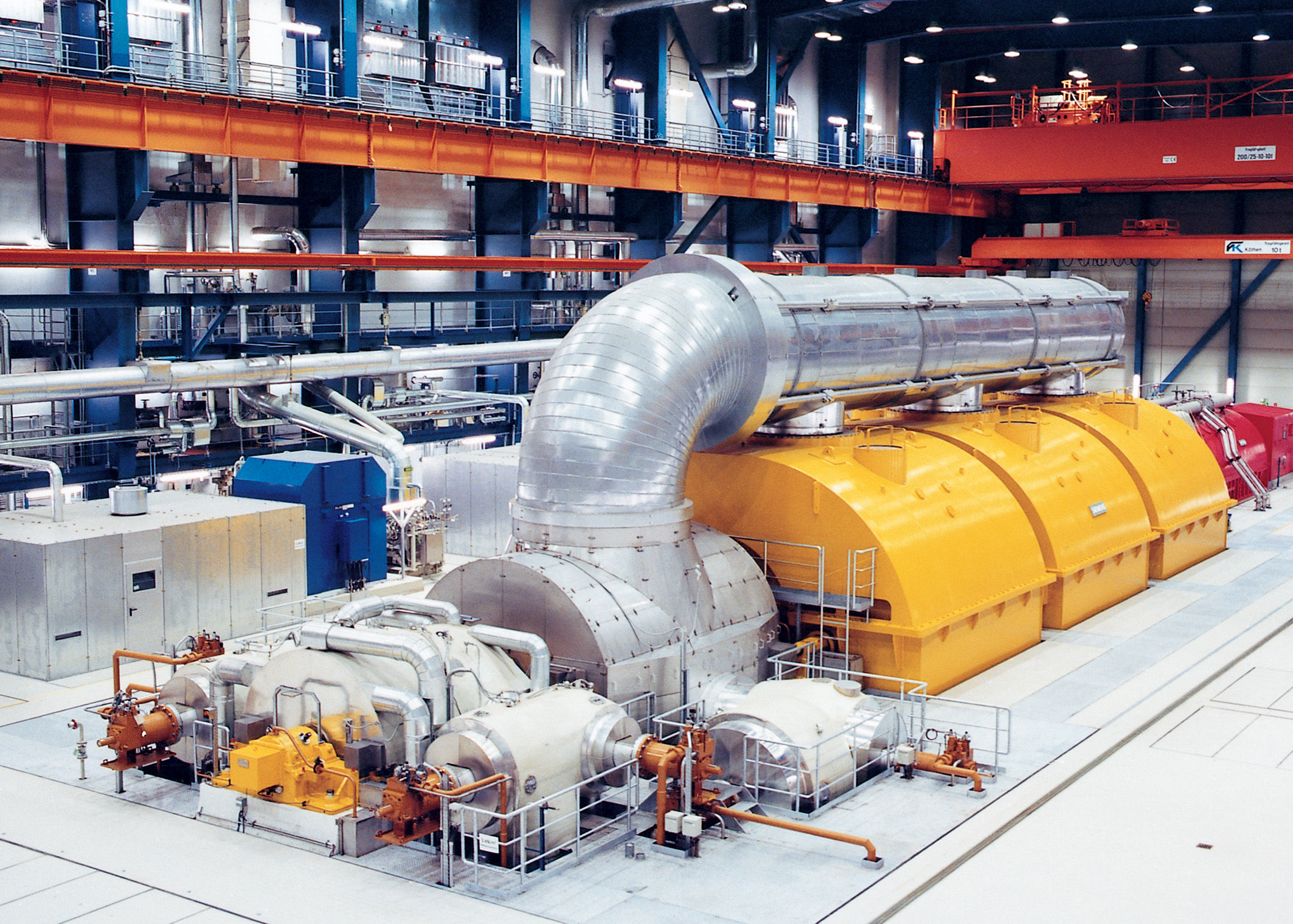What is a Steam Turbine Power Plant?
What is a Steam Turbine Power Plant?
A steam power plant is a power plant in which water is heated, turns into steam and spins a steam turbine which drives an electrical generator to produce electricity. A steam turbine is a device that extracts thermal energy from pressurized steam and uses it to do mechanical work on a rotating output shaft. Its modern manifestation was invented by Charles Parsons in 1884.
Parts of steam turbine power plant
Boiler
A boiler is a closed vessel in which water or other fluid is heated. The heated or vaporized fluid exits the boiler for use in various processes or heating applications.
Types of Boilers
a. Water tube boiler
b. Fire tube boiler
Water Tube Boiler
The water flows through the tube and gases flow outside the tube.
Fire Tube Boiler
The fire tube boiler passes through the tubes and water is stored outside the tube.
Steam Turbine Power Plant Boiler Accessories
Air Preheater
Air preheater is a heat recovery unit . An air pre heater is used to recover the heat from the exhaust flue gas. The purpose of the air pre heater is to recover the heat from the boiler flue gas which increases the thermal efficiency of the boiler by reducing the useful heat lost in the flue gas. There are two types of air pre heaters for use in steam.
Super Preheater
A superheater is a device used to convert saturated steam or wet steam into dry steam used in steam turbine power plants.
Steam Turbine
Steam turbine prime mover in which a steam turbine is in a rotary motion is obtained by the gradual change of momentum of the steam. In a steam turbine the force exerted on the blades is due to the velocity of steam. A turbine is a rotary mechanical device that extracts energy from a fluid flow and converts it into useful work. The work produced by a turbine can be used for generating electrical power when combined with a generator. A turbine is a turbomachine with at least one moving part called a rotor assembly, which is a shaft or drum with blades attached. Moving fluid acts on the blades so that they move and impart rotational energy to the rotor. Early turbine examples are windmills and waterwheels.
In simple terms, a steam turbine works by using a heat source (gas, coal, nuclear or solar) to heat water to extremely high temperatures until it is converted into steam. As that steam flows past a turbine’s spinning blades, the steam expands and cools.
In general, a steam turbine is a rotary heat engine that converts thermal energy contained in the steam to mechanical energy or to electrical energy. In its simplest form, a steam turbine consists of a boiler (steam generator), turbine, condenser, feed pump and a variety of auxiliary devices. The rotor that carries the blading to convert the thermal energy of the steam into the rotary motion of the shaft, (2) the casing, inside of which the rotor turns, that serves as a pressure vessel for containing the steam (it also accommodates fixed nozzle passages or stator).
Steam Turbine Rotor
Types of Steam Turbine
Impulse turbine
Impulse turbine. An impulse turbine is a type of steam turbine where the rotor derives its rotational force from the impact force, or the direct push of steam on the blades.
Primarily consists of:
- a nozzle or a set of nozzles.
- a rotor mounted on a shaft, one set of moving blades attached to the rotor.
- Generally nozzles are attached to a casing.
Reaction turbine
A reaction turbine is a horizontal or vertical wheel that operates with the wheel completely submerged, a feature which reduces turbulence. In theory, the reaction turbine works like a rotating lawn sprinkler where water at a central point is under pressure and escapes.
Steam turbine Generator
A steam turbine generator is the primary power conversion component of the power plant. The function of the steam turbine generator is to convert the thermal energy of the steam from the steam generator to electrical energy. Two separate components are provided: the steam turbine to convert the thermal energy to rotating mechanical energy and the generator to convert the mechanical energy to electrical energy. Typically, the turbine is directly coupled to the generator.
Steam Turbine Power Plant Working Principle
Working principle of a steam turbine depends on the dynamic action of steam. A high-velocity steam is coming from the nozzles and it strikes the rotating blades which are fitted on a disc mounted on a shaft. This high-velocity steam produces dynamic pressure on the blades in which blades and shaft both start to rotate in the same direction. Basically, in a steam turbine pressure energy of steam extracts and then it is converted into kinetic energy by allowing the steam to flow through the nozzles. The conversion of kinetic energy does mechanical work to the rotor blades and the rotor is connected to a steam turbine generator which acts as a mediator.Turbine generator collects mechanical energy from the rotor and converts into electrical energy. Since the construction of steam turbine is simple, its vibration is much less than the other engine for same rotating speed.

